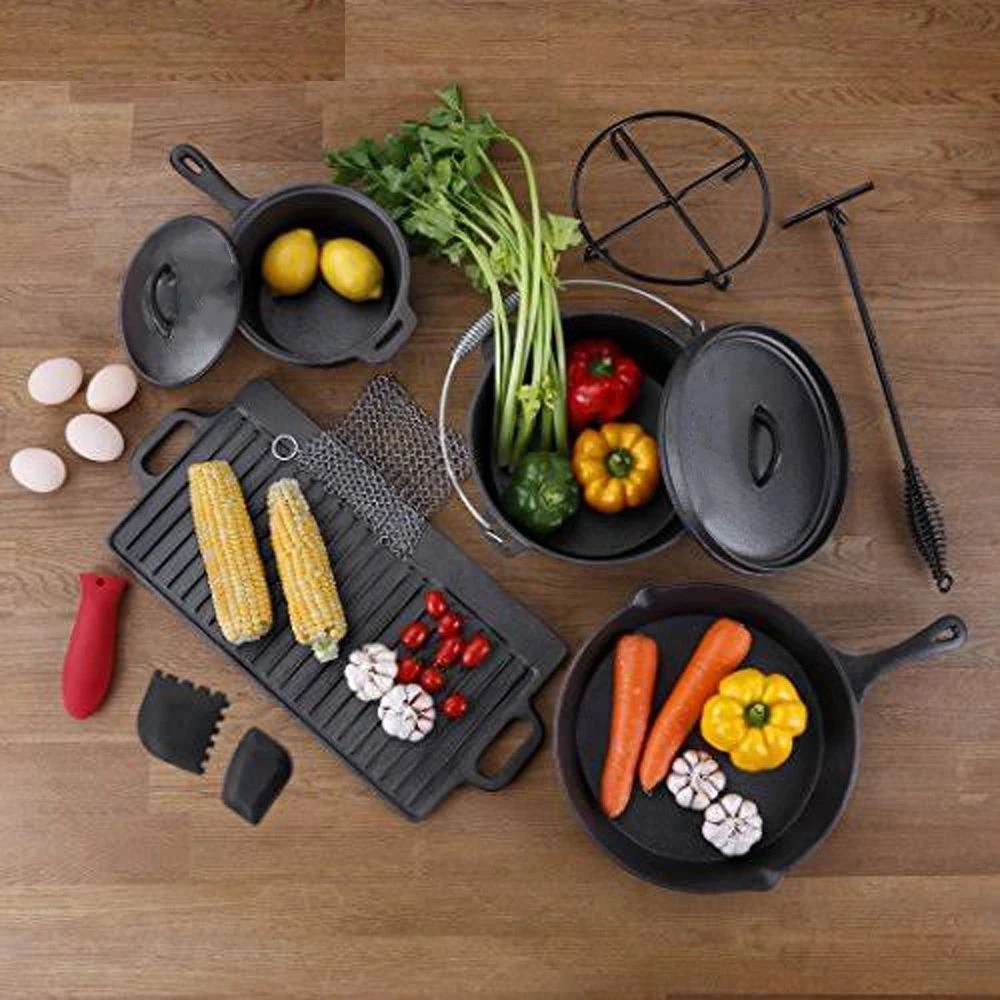
Should I Prepare My Cast Iron Skillet with Seasoning Before Use?
Do I Need to Season My Cast Iron Skillet?
Cast iron skillets have earned a special place in many kitchens, celebrated for their durability, versatility, and ability to retain heat. One topic that often comes up among both novice and seasoned cooks is whether or not they need to season their cast iron skillets. To answer this question, it’s essential to understand what seasoning is, why it's important, and how to do it.
What is Seasoning?
Seasoning a cast iron skillet involves applying a layer of oil to the surface and heating it to create a natural, non-stick coating. This process not only enhances the skillet’s cooking performance but also protects it from rust and other forms of corrosion. The seasoning process transforms oil into a polymer that bonds with the cast iron, effectively creating a seasoned surface that improves over time with use.
Why Should You Season Your Cast Iron Skillet?
1. Non-stick Surface One of the most significant benefits of seasoning is the creation of a natural non-stick surface. While new cast iron skillets may not have this seasoning, once they are properly seasoned, they allow food to glide off easily, making cooking and cleaning up much simpler.
2. Protection Against Rust Cast iron is prone to rust if not cared for properly. Seasoning creates a protective barrier that helps to prevent moisture from reaching the porous surface of the skillet, thus reducing the risk of rust formation.
3. Enhanced Flavor A well-seasoned cast iron skillet can enhance the flavor of your food. The seasoning can impart a unique taste to dishes, particularly when cooking foods that release fats, such as meats and vegetables.
4. Durability Cast iron skillets, when maintained and seasoned correctly, can last a lifetime or even be passed down through generations. The seasoning process is an essential aspect of maintaining this durability.
How to Season Your Cast Iron Skillet
If you've decided that you need to season your cast iron skillet (which you almost certainly do if it's new or hasn’t been used in a while), the process is straightforward
.do i need to season my cast iron skillet

1. Clean the Skillet Start with a clean skillet. If it's new, wash it with warm, soapy water to remove any manufacturing oils. If it’s an older pan with built-up residue, use a mixture of coarse salt and oil to scrub it clean.
2. Dry Thoroughly After cleaning, dry it immediately using a clean cloth or paper towels. Any remaining moisture can lead to rust.
3. Apply Oil Choose a high-smoke-point oil for seasoning. Flaxseed oil, grapeseed oil, or vegetable oil are great options. Apply a thin layer of oil using a paper towel, ensuring the entire surface (inside and out) is coated. Wipe away excess oil, leaving just a thin sheen.
4. Bake the Skillet Preheat your oven to around 450°F (230°C). Place the skillet upside down on the top rack with a sheet of aluminum foil on the bottom rack to catch any drips. Bake the skillet for about an hour. This high heat helps to bond the oil to the cast iron surface.
5. Cool Down After an hour, turn off the oven and allow the skillet to cool inside. This gradual cooling process also helps improve the seasoning.
6. Repeat For best results, it’s advisable to repeat the seasoning process two to three times, especially for a brand new skillet.
Maintenance After Seasoning
To maintain the seasoning, clean your skillet with hot water and a brush or sponge after each use. Avoid soap, as it can strip the seasoning. Dry immediately and apply a light coat of oil before storing it away. This routine will keep your skillet in excellent condition and extend its life.
Conclusion
In summary, yes, seasoning your cast iron skillet is essential. It is fundamental to achieving that sought-after non-stick surface, protecting the skillet from rust, enhancing food flavor, and ensuring long-lasting durability. By following the appropriate steps, you can have a beautifully seasoned skillet that will serve you well for generations. A little effort goes a long way in maintaining this culinary treasure!
-
Black Cast Iron Pan- ZD Cookware|Non-Stick, Heat ResistantNewsAug.03,2025
-
Cast Iron Cookware Pancake Pan- ZD Cookware|Non-Stick, Even Heat, DurableNewsAug.02,2025
-
Cast Iron Cookware- Baixiang County Zhongda Machinery|Non-Stick, Heat RetentionNewsAug.02,2025
-
High Quality Kitchen Durable Black Round Cast Iron Cookware Pancake Crepe Pan With Wooden Handle|Non-Stick Surface&Heat RetentionNewsAug.02,2025
-
Authentic Traditional Chinese Wok for High-Performance CookingNewsAug.02,2025
-
Season Cast Iron Perfectly with GPT-4 Turbo TipsNewsAug.01,2025


